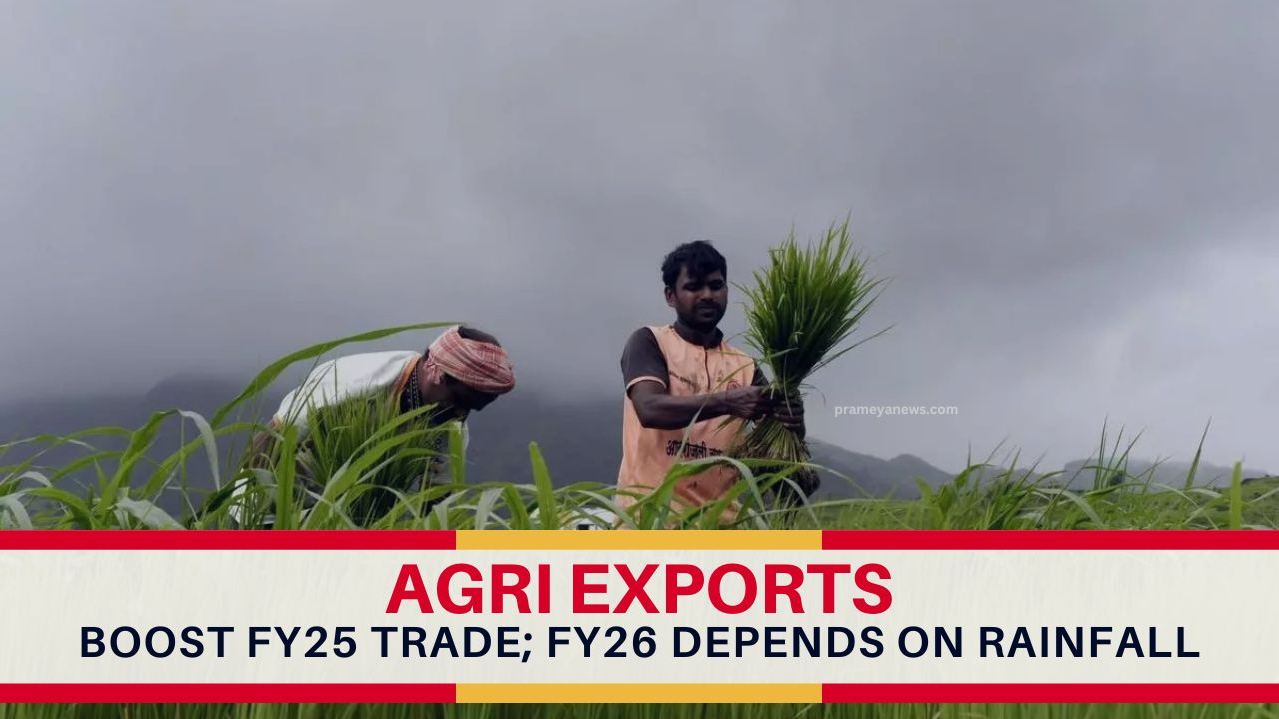

India's farms and food processors helped stabilise the country's merchandise trade in FY 2024-25. Their strong performance offset weak industrial exports during the global slowdown. As the nation looks ahead, the performance of the upcoming monsoon looms large, holding significant implications for trade, inflation, and overall economic health in FY 2025-26.
Agriculture the Bright Spot in FY25 Exports
Data released by the Ministry of Commerce highlighted agricultural and allied products as standout performers in India's export basket for FY25. Several categories registered robust growth:
These strong agricultural performances helped lift India's total non-petroleum exports by 6% year-on-year to $374.08 billion. This contribution was crucial, as overall merchandise exports saw minimal growth, edging up just 0.08% to $437.42 billion, reflecting the broader global trade weakness. Notably, export growth was highest to destinations like the US, UK, Japan, UAE, and France, suggesting a potential shift towards premium processed and specialty food products.
Monsoon: The Deciding Factor for FY26
The outlook for the current financial year (FY26) is increasingly dependent on the performance of the southwest monsoon. Early forecasts offer room for optimism, with the India Meteorological Department (IMD) predicting rainfall at 5% above normal, and private agency Skymet forecasting 3% above average.
A favourable monsoon could trigger several positive outcomes:
However, the risks associated with a sub-par or unevenly distributed monsoon are significant. Poor rainfall could disrupt agricultural output, drive up food prices domestically, necessitate tighter export controls, and limit the RBI's monetary policy flexibility, ultimately dampening rural economic activity.
Broader Trade & Input Trends
The overall trade picture for FY25 reflected the balancing act performed by the agricultural sector. While robust services exports grew 12.45% to $383.51 billion, the total exports (goods + services) rose 5.5% to $820.93 billion. However, total imports climbed faster at 6.85% to $915.19 billion, leading to a widening of the overall trade deficit to $94.26 billion from $78.39 billion in the previous fiscal year.
On the agricultural input side, pulses imports fell sharply in March (-23.45%), possibly due to better domestic supplies. Fertilizer imports saw a modest decline over the year (-2.21%), while coal imports rose 20%, indicating increased energy demand for agri-processing and logistics.
To sum up, India's trade and economic trajectory for FY26 appears strongly linked to the upcoming monsoon. A good rainy season could reinforce the strategic importance of agriculture-led growth, help manage inflation, and provide a stable foundation for broader economic resilience.